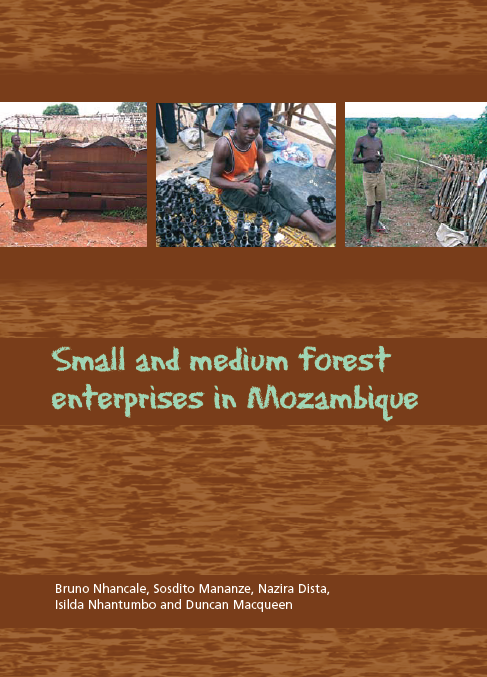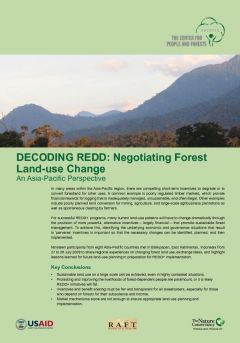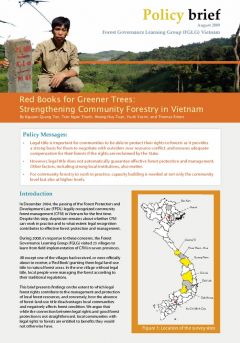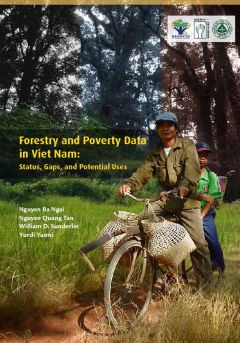Agriculture Strategic Development Plan 2010-2012.
The Agriculture Strategic Development Plan is a national policy with a multi-sectoral approach. The Timeframe of this Plan is 3 years between 2010 and 2012.
Small and medium forest enterprises in Mozambique
Natural forests and other types of woody vegetation cover 55.3 million hectares of
Mozambique’s total land area. Of the total forest, 67% is suitable for timber production. This represents a substantial commercial resource which forest enterprises could use to help achieve the aims of Mozambique’s Action Plan for the Reduction of Absolute Poverty (PARPA) in a country where 70% of the population lives in rural areas.
Decoding REDD: Negotiating Forest Land-Use Change
In many areas within the Asia-Pacific region, there are compelling short-term incentives to degrade or to convert forestland for other uses. A common example is poorly regulated timber markets, which provide financial rewards for logging that is inadequately managed, unsustainable, and often illegal. Other examples include poorly planned land conversion for mining, agriculture, and large-scale agribusiness plantations as well as spontaneous clearing by farmers.
Red Books for Greener Trees: Strengthening Community Forestry in Vietnam
In December 2004, the passing of the Forest Protection and Development Law (FPDL) legally recognized community forest management (CFM) in Vietnam for the first time. Despite this step, skepticism remains about whether CFM can work in practice and to what extent legal recognition contributes to effective forest protection and management.
During 2008, in response to these concerns, the Forest Governance Learning Group (FGLG) visited 25 villages to learn from field implementation of CFM in seven provinces.
[Effect of forest composition and structure on forest birds richness: implications for sustainable forest management]
En el presente trabajo se analiza cómo afecta la composición y estructura del bosque a la riqueza de aves forestales, a escala de 1x1 km, en Cataluña. Se muestra que la riqueza de aves se ve favorecida por la cabida forestal, siempre que se evite la dominancia de masas excesivamente cerradas (FCC [Fracción de Cabida Cubierta] 70%); por la presencia de las clases naturales de edad más avanzadas (latizales y fustales); y por la diversidad de especies arbóreas y la mezcla de frondosas y coníferas.
Complementary Law No. 143 establishing the Planning and Territorial Planning System of the State of Roraima.
This Complementary Law, consisting of 42 articles divided into seven Chapters, establishes the Planning and Territorial Planning System of the State of Roraima. The above mentioned System, called SPOT/RR, is the main guiding instrument for planning of land occupation and control of the use of natural resources of the territory of the State of Roraima, in the implementation of plans, programmes, projects, works and public and private activities. The purpose of the SPOT/RR is to implement the provisions of art.
A GOOD PRACTICE GUIDE SUSTAINABLE FOREST MANAGEMENT, BIODIVERSITY and LIVELIHOODS
Forests are essential for human survival and well-being. They harbour two thirds of all terrestrial animal and plant species. They provide us with food, oxygen, shelter, recreation, and spiritual sustenance, and they are the source for over 5,000 commercially-traded products, ranging from pharmaceuticals to timber and clothing. The biodiversity of forests—the variety of genes, species, and forest ecosystems—underpins these goods and services, and is the basis for long-term forest health and stability.
Forest and Poverty Data in Vietnam: Status, Gaps, and Potential Uses
In Vietnam, the lack of quality data in the forestry sector has been an obstacle to institutional reflection and effective policy formulation. This study analyzes the status and gaps of this data, and its implications for addressing poverty in Vietnam.
Impacts of the Hutan Kamasyarakatan Social Forestry Program in the Sumberjaya watershed, West Lampung District of Sumatra, Indonesia
This paper investigates the impacts of a social forestry program in Indonesia, Hutan Kamasyarakatan (HKm), based on analysis of a survey of 640 HKm and comparable non-HKm plots in the Sumberjaya watershed of southern Sumatra, and of the households operating those plots. The HKm program provides groups of farmers with secure-tenure permits to continue farming on state Protection Forest land and in exchange for protecting remaining natural forestland, planting multistrata agroforests, and using recommended soil and water conservation (SWC) measures on their coffee plantations.









